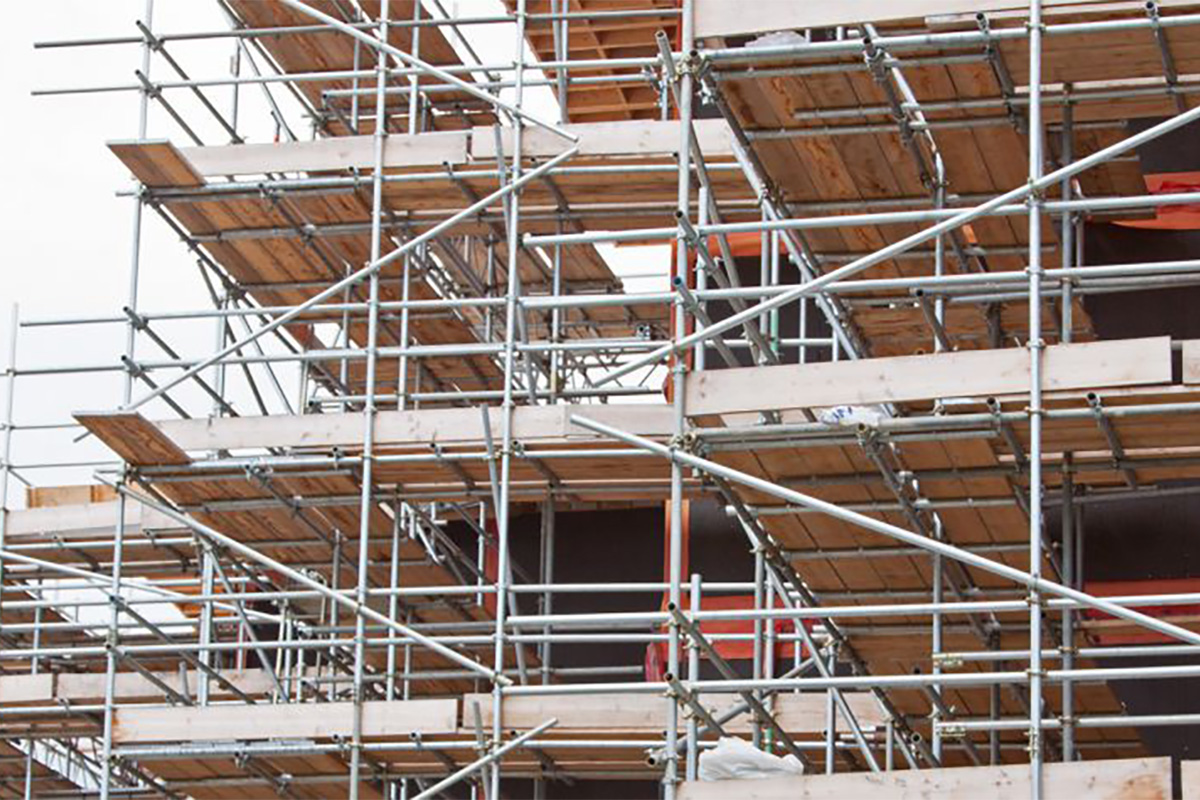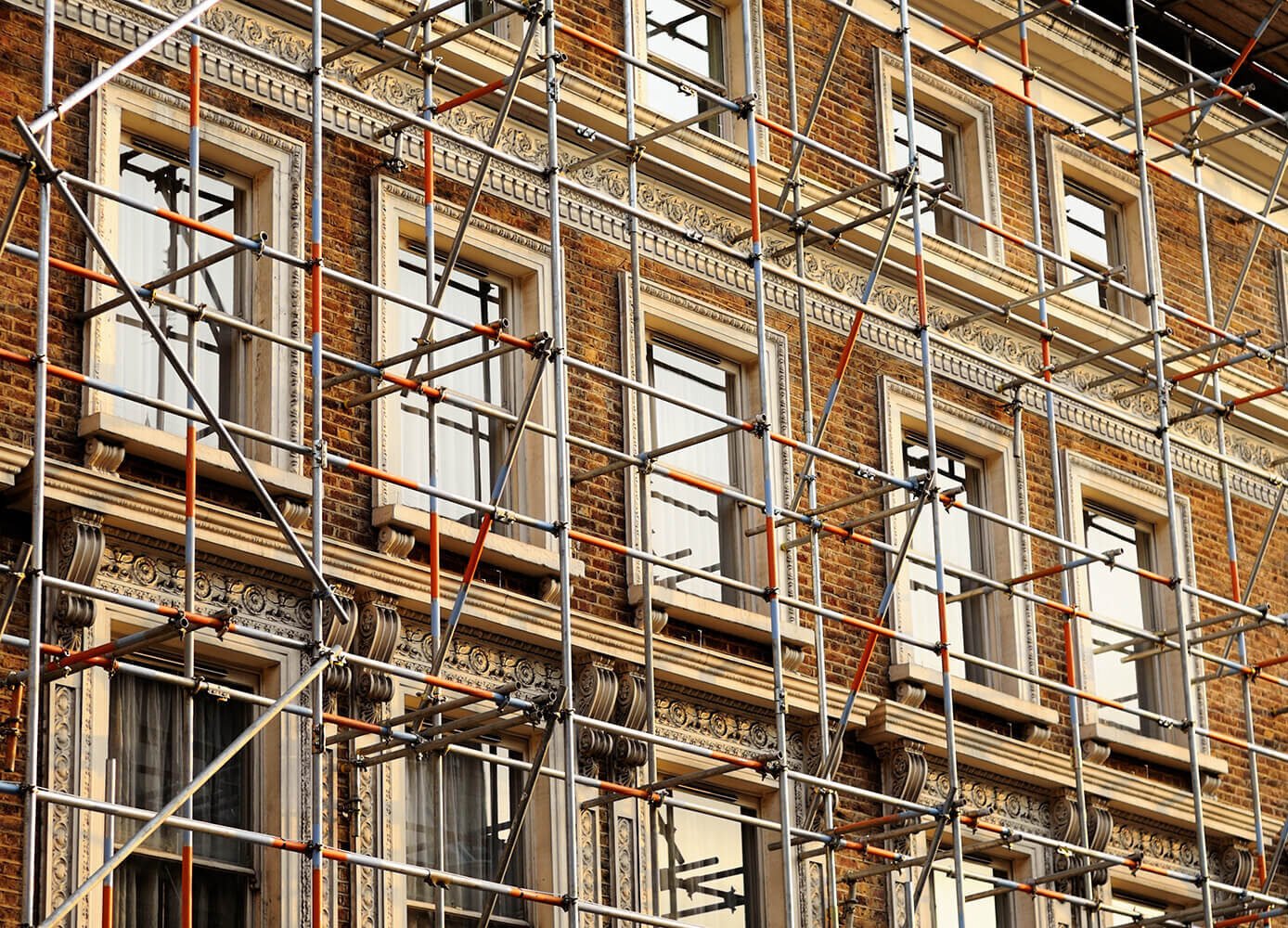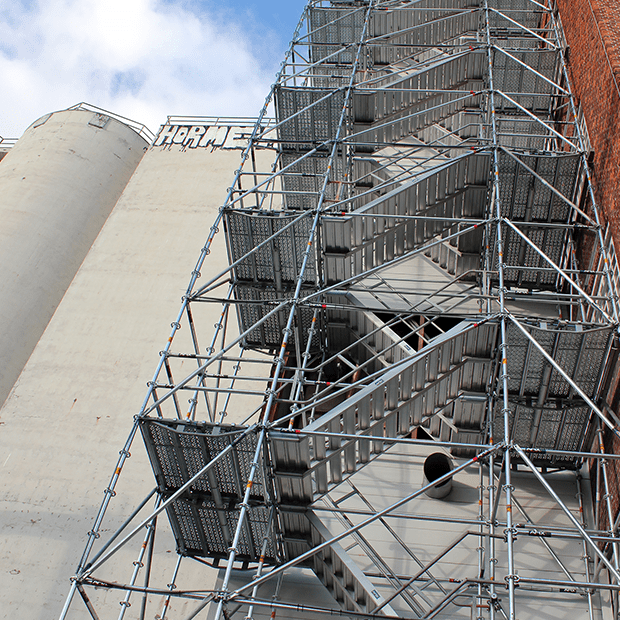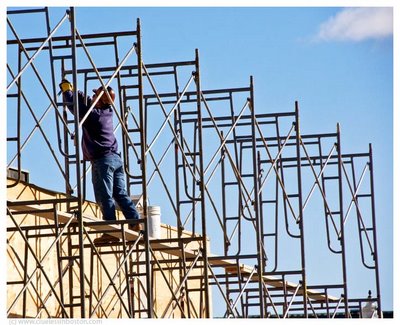Choosing a Local Scaffolding Company for Reliable and Timely Service
Choosing a Local Scaffolding Company for Reliable and Timely Service
Blog Article
Exploring the Various Sorts Of Scaffolding Utilized in Building Tasks
The building and construction industry counts greatly on different sorts of scaffolding to fulfill details job requirements, each offering distinctive advantages and applications. Traditional structure scaffolding offers a sturdy structure for general jobs, while suspended scaffolding is essential for work with skyscraper structures. Various other options, such as system and rolling scaffolding, satisfy efficiency and mobility, respectively. Moreover, the cantilever variant proves very useful in urban atmospheres where space is constrained. Recognizing the nuances of these scaffolding types is essential for optimizing safety and security and performance on building websites, motivating a better assessment of their unique qualities and applications.

Conventional Frame Scaffolding
Traditional structure scaffolding is among the most extensively made use of techniques in the construction sector because of its robustness and convenience. This system is composed of horizontal and upright frameworks that are put together to develop a steady platform for employees and materials. The major components consist of vertical blog posts, horizontal journals, and diagonal dental braces, which together supply a solid framework that can support substantial loads.
Among the essential advantages of standard structure scaffolding is its adaptability to different building and construction projects, ranging from property structures to large commercial structures. The modular layout permits easy assembly and disassembly, making it effective for both temporary and lasting projects. Furthermore, the system can be tailored in height and width, fitting various structure layouts and website problems.
Safety and security is critical in scaffolding applications, and standard framework systems are furnished with guardrails and toe boards to stop drops and ensure worker protection. Normal examinations and adherence to safety and security laws are crucial in maintaining the honesty of the scaffold (Scaffolding). On the whole, typical structure scaffolding continues to be a basic option in the building market, supplying a trustworthy system for labor and improving general project efficiency

Suspended Scaffolding
Suspended scaffolding offers an unique option for construction tasks that need accessibility to elevated surface areas, particularly in circumstances where traditional structure scaffolding may be unwise. This kind of scaffolding is commonly suspended from the roof covering or upper degrees of a framework, utilizing a system of pulley-blocks, ropes, and systems to create a working room that can be gotten used to different elevations.
Among the primary advantages of put on hold scaffolding is its flexibility. It can be easily repositioned or lowered to fit adjustments in building requirements, making it excellent for tasks such as window setup, frontage job, and upkeep on high-rise buildings. Additionally, the very little impact of put on hold scaffolding enables far better use ground room in urban environments, where space is commonly minimal.
Safety and security is an essential factor to consider in the use of suspended scaffolding. Generally, put on hold scaffolding gives a reliable and efficient remedy for accessing hard-to-reach locations in different construction situations, improving both performance and safety and security on site.
System Scaffolding
System scaffolding, typically considered a modern remedy in the scaffolding market, contains pre-engineered parts that can be rapidly constructed and adapted for different building and construction tasks. Scaffolding. This sort of scaffolding is defined by its modular style, which permits for flexibility and efficiency on job websites, accommodating architectural demands and different elevations
Commonly made from high-strength steel or light weight aluminum, system scaffolding supplies enhanced longevity and security. The parts consist of vertical messages, straight ledgers, and angled dental braces, which adjoin securely, making sure a robust structure. The design commonly incorporates standardized installations, browse this site streamlining setting up and disassembly processes, consequently minimizing labor time and costs.

Rolling Scaffolding
Rolling scaffolding is a flexible choice to traditional set scaffolding, made for movement and ease of use on building and construction sites. This kind of scaffolding consists of a system supported by structures with wheels, allowing workers to quickly move it as required. The flexibility feature substantially boosts efficiency, as it reduces downtime linked with assembling and taking apart fixed scaffolding.
Commonly built from lightweight products such as aluminum or steel, rolling scaffolding uses a durable yet mobile solution for jobs requiring regular important site repositioning - Scaffolding. It is specifically beneficial in jobs such as painting, drywall setup, and electric job, where access to different elevations and locations is needed
Safety is critical in rolling scaffolding layout, with features such as locking wheels to avoid unintentional motion when being used, and guardrails to shield employees from drops. Furthermore, several models are adjustable in height, fitting numerous project needs.
Cantilever Scaffolding

The design of cantilever scaffolding typically entails utilizing arms or braces anchored to a structure or structure, making it possible for the platform to expand external safely. Security is paramount; hence, these scaffolds should be crafted to stand up to ecological conditions and numerous loads. Routine inspection click here to find out more and upkeep are vital to make sure structural stability and worker safety and security.
Cantilever scaffolding is preferred for its versatility and effective use area, making it a popular option in city environments where area restraints are typical. In addition, it helps with much easier access to high elevations, inevitably adding to the overall effectiveness of building and construction projects. Just like all scaffolding kinds, correct training and adherence to safety and security standards are important for employees making use of cantilever scaffolding.
Conclusion
Typical structure scaffolding gives security, while suspended scaffolding offers versatility for elevated jobs. System scaffolding assists in quick assembly, and rolling scaffolding boosts wheelchair for varying work settings.
Typical structure scaffolding supplies a sturdy structure for basic tasks, while suspended scaffolding is essential for job on skyscraper frameworks.Rolling scaffolding is a versatile alternative to traditional fixed scaffolding, made for flexibility and convenience of use on construction websites. As with all scaffolding kinds, correct training and adherence to safety and security standards are critical for employees utilizing cantilever scaffolding.
Typical framework scaffolding provides security, while put on hold scaffolding offers convenience for elevated jobs. System scaffolding facilitates fast setting up, and rolling scaffolding improves flexibility for varying job environments.
Report this page